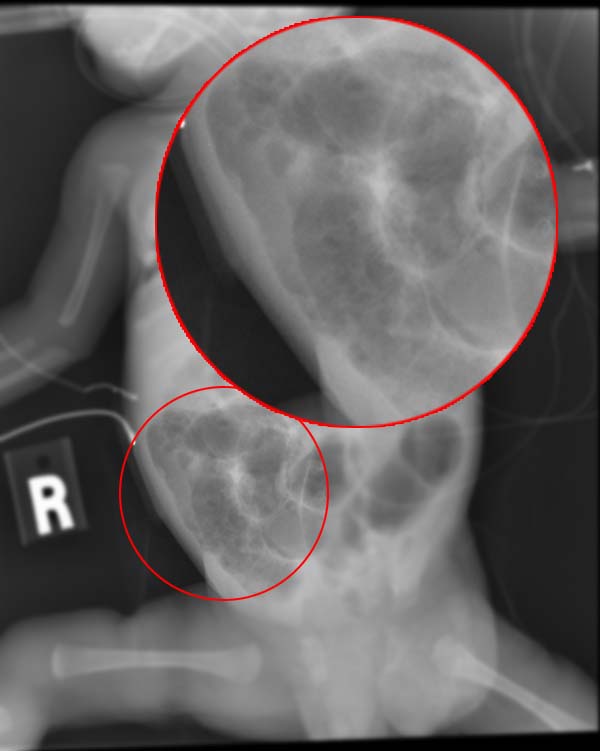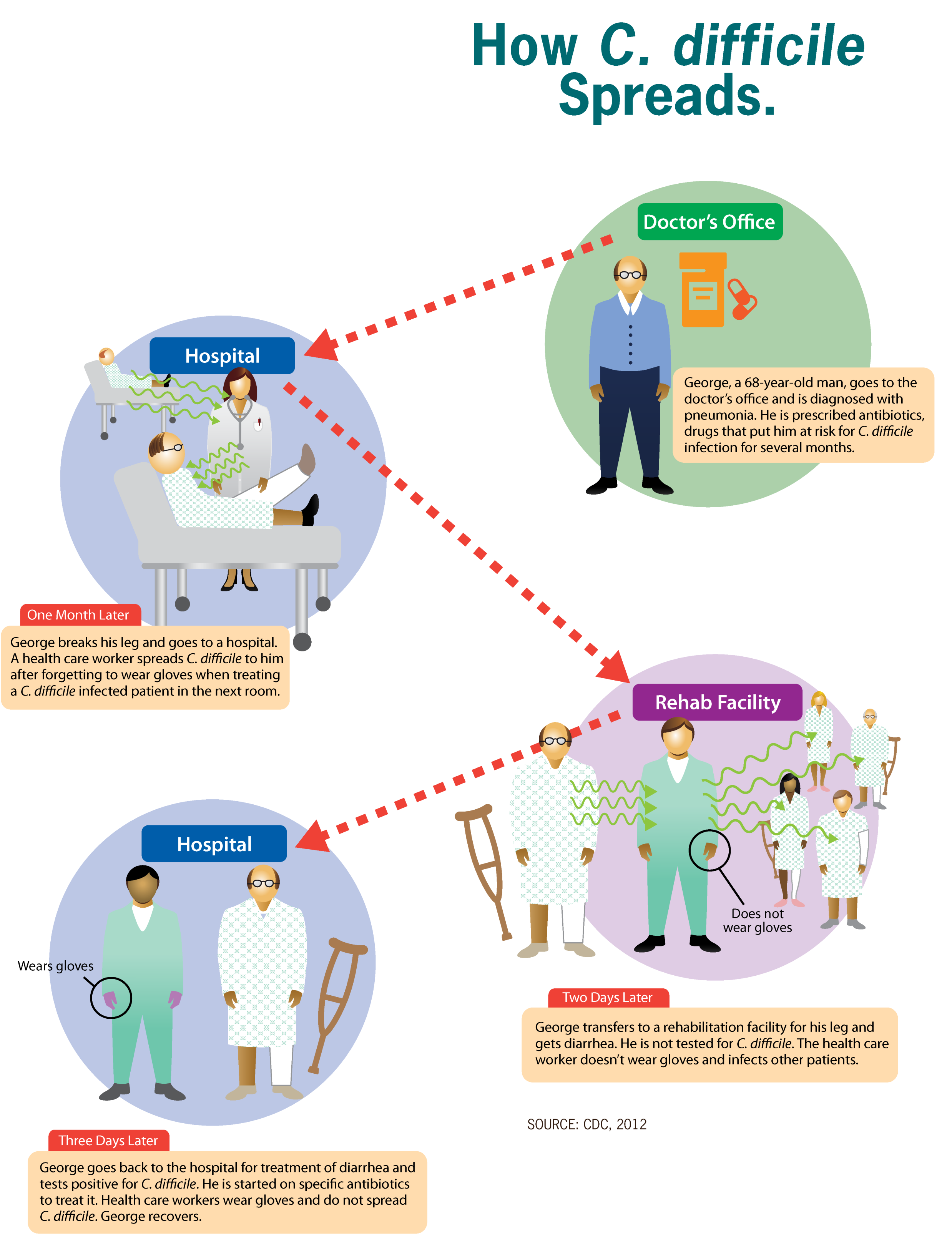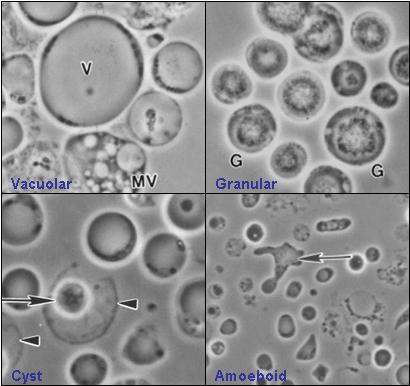|
Enterocolitis
Enterocolitis is an inflammation of the digestive tract, involving enteritis of the small intestine and colitis of the colon. It may be caused by various infections, with bacteria, viruses, fungi, parasites, or other causes. Common clinical manifestations of enterocolitis are frequent diarrheal defecations, with or without nausea, vomiting, abdominal pain, fever, chills, alteration of general condition. General manifestations are given by the dissemination of the infectious agent or its toxins throughout the body, or – most frequently – by significant losses of water and minerals, the consequence of diarrhea and vomiting. Cause Among the causal agents of acute enterocolitis are: * bacteria: ''Salmonella'', ''Shigella'', ''Escherichia coli (E. coli)'', '' Campylobacter'' etc. * viruses: enteroviruses, rotaviruses, Norovirus, adenoviruses * fungi: candidiasis, especially in immunosuppressed patients or who have previously received prolonged antibiotic treatment * parasites: ''Gi ... [...More Info...] [...Related Items...] OR: [Wikipedia] [Google] [Baidu] |
Necrotizing Enterocolitis
Necrotizing enterocolitis (NEC) is a devastating intestinal disease that affects premature or very low birth weight infants.Gephart S.M., Quinn M. A call to action to fight for equity and end necrotizing enterocolitis disparities. ''Adv. Neonatal Care.'' 2021;21(5):333-335. doi:10.1097/ANC.0000000000000940 Symptoms may include poor feeding, bloating, decreased activity, blood in the stool, vomiting of bile, bowel death, multiorgan failure, and even death. The exact cause is unclear. However, several risk factors have been identified. Consistently described risk factors include formula feeding, intestinal dysbiosis, low birth weight, and prematurity. Maternal factors such as chorioamnionitis, cocaine abuse, ''in utero'' growth restriction, intrahepatic cholestasis during pregnancy, increased body mass index, lack of prenatal steroids, mode of delivery, placental abruption, preeclampsia, and smoking have not been consistently implicated with the development of NEC. Other risk fact ... [...More Info...] [...Related Items...] OR: [Wikipedia] [Google] [Baidu] |
Gastroenteritis
Gastroenteritis, also known as infectious diarrhea and gastro, is an inflammation of the gastrointestinal tract including the stomach and intestine. Symptoms may include diarrhea, vomiting, and abdominal pain. Fever, lack of energy, and dehydration may also occur. This typically lasts less than two weeks. It is not related to influenza, even though in the U.S. it is sometimes called the "stomach flu". Gastroenteritis is usually caused by viruses; however, gut bacteria, parasites, and fungi can also cause gastroenteritis. In children, rotavirus is the most common cause of severe disease. In adults, norovirus and '' Campylobacter'' are common causes. Eating improperly prepared food, drinking contaminated water or close contact with a person who is infected can spread the disease. Treatment is generally the same with or without a definitive diagnosis, so testing to confirm is usually not needed. For young children in impoverished countries, prevention includes hand washing with so ... [...More Info...] [...Related Items...] OR: [Wikipedia] [Google] [Baidu] |
Enteritis
Enteritis is inflammation of the small intestine. It is most commonly caused by food or drink contaminated with pathogenic microbes,Dugdale, David C., IIII, and George F Longretc"Enteritis" MedlinePlus Medical Encyclopedia, 18 October 2008. Accessed 24 August 2009. such as ''serratia'', but may have other causes such as NSAIDs, radiation therapy as well as autoimmune conditions like Crohn's disease and celiac disease. Symptoms include abdominal pain, cramping, diarrhea, dehydration, and fever. Related diseases of the gastrointestinal system include inflammation of the stomach and large intestine. Duodenitis, jejunitis and ileitis are subtypes of enteritis which are localised to a specific part of the small intestine. Inflammation of both the stomach and small intestine is referred to as gastroenteritis. Signs and symptoms Signs and symptoms of enteritis are highly variable and vary based on the specific cause and other factors such as individual variance and stage of disease. ... [...More Info...] [...Related Items...] OR: [Wikipedia] [Google] [Baidu] |
Adenoviridae
Adenoviruses (members of the family ''Adenoviridae'') are medium-sized (90–100 nm), nonenveloped (without an outer lipid bilayer) viruses with an icosahedral nucleocapsid containing a double-stranded DNA genome. Their name derives from their initial isolation from human adenoids in 1953. They have a broad range of vertebrate hosts; in humans, more than 50 distinct adenoviral serotypes have been found to cause a wide range of illnesses, from mild respiratory infections in young children (known as the common cold) to life-threatening multi-organ disease in people with a weakened immune system. Virology Classification This family contains the following genera: * '' Atadenovirus'' * '' Aviadenovirus'' * '' Ichtadenovirus'' * '' Mastadenovirus'' (including all human adenoviruses) * '' Siadenovirus'' * '' Testadenovirus'' Diversity In humans, currently there are 88 human adenoviruses (HAdVs) in seven species (Human adenovirus A to G): * A: 12, 18, 31 * B: 3, 7, 11, 14, ... [...More Info...] [...Related Items...] OR: [Wikipedia] [Google] [Baidu] |
Pseudomembranous Enterocolitis
''Clostridioides difficile'' infection (CDI or C-diff), also known as ''Clostridium difficile'' infection, is a symptomatic infection due to the spore-forming bacterium ''Clostridioides difficile''. Symptoms include watery diarrhea, fever, nausea, and abdominal pain. It makes up about 20% of cases of antibiotic-associated diarrhea. Antibiotics can contribute to detrimental changes in gut microbiota; specifically, they decrease short-chain fatty acid absorption which results in osmotic, or watery, diarrhea. Complications may include pseudomembranous colitis, toxic megacolon, perforation of the colon, and sepsis. ''Clostridioides difficile'' infection is spread by bacterial spores found within feces. Surfaces may become contaminated with the spores with further spread occurring via the hands of healthcare workers. Risk factors for infection include antibiotic or proton pump inhibitor use, hospitalization, other health problems, and older age. Diagnosis is by stool culture or ... [...More Info...] [...Related Items...] OR: [Wikipedia] [Google] [Baidu] |
Dysentery
Dysentery (UK pronunciation: , US: ), historically known as the bloody flux, is a type of gastroenteritis that results in bloody diarrhea. Other symptoms may include fever, abdominal pain, and a feeling of incomplete defecation. Complications may include dehydration. The cause of dysentery is usually the bacteria from genus ''Shigella'', in which case it is known as shigellosis, or the amoeba ''Entamoeba histolytica''; then it is called amoebiasis. Other causes may include certain chemicals, other bacteria, other protozoa, or parasitic worms. It may spread between people. Risk factors include contamination of food and water with feces due to poor sanitation. The underlying mechanism involves inflammation of the intestine, especially of the colon. Efforts to prevent dysentery include hand washing and food safety measures while traveling in areas of high risk. While the condition generally resolves on its own within a week, drinking sufficient fluids such as oral rehydration s ... [...More Info...] [...Related Items...] OR: [Wikipedia] [Google] [Baidu] |
Entamoeba Histolytica
''Entamoeba histolytica'' is an anaerobic parasitic amoebozoan, part of the genus ''Entamoeba''. Predominantly infecting humans and other primates causing amoebiasis, ''E. histolytica'' is estimated to infect about 35-50 million people worldwide. ''E. histolytica'' infection is estimated to kill more than 55,000 people each year. Previously, it was thought that 10% of the world population was infected, but these figures predate the recognition that at least 90% of these infections were due to a second species, ''E. dispar''. Mammals such as dogs and cats can become infected transiently, but are not thought to contribute significantly to transmission. The word '' histolysis'' literally means disintegration and dissolution of organic tissues. Transmission The active (trophozoite) stage exists only in the host and in fresh loose feces; cysts survive outside the host in water, in soils, and on foods, especially under moist conditions on the latter. The infection can occur when a ... [...More Info...] [...Related Items...] OR: [Wikipedia] [Google] [Baidu] |
Cryptosporidium
''Cryptosporidium'', sometimes informally called crypto, is a genus of apicomplexan parasitic alveolates that can cause a respiratory and gastrointestinal illness (cryptosporidiosis) that primarily involves watery diarrhea (intestinal cryptosporidiosis), sometimes with a persistent cough (respiratory cryptosporidiosis). Treatment of gastrointestinal infection in humans involves fluid rehydration, electrolyte replacement, and management of any pain. , nitazoxanide is the only drug approved for the treatment of cryptosporidiosis in immunocompetent hosts. Supplemental zinc may improve symptoms, particularly in recurrent or persistent infections or in others at risk for zinc deficiency. ''Cryptosporidium'' oocysts are 4–6 μm in diameter and exhibit partial acid-fast staining. They must be differentiated from other partially acid-fast organisms including ''Cyclospora cayetanensis''. General characteristics ''Cryptosporidium'' causes cryptosporidiosis, an infection tha ... [...More Info...] [...Related Items...] OR: [Wikipedia] [Google] [Baidu] |
Blastocystis
''Blastocystis'' is a genus of single-celled heterokont parasites belonging to a group of organisms that are known as the Stramenopiles (also called Heterokonts) that includes algae, diatoms, and water molds. Blastocystis consists of several species, living in the gastrointestinal tracts of species as diverse as humans, farm animals, birds, rodents, reptiles, amphibians, fish, and cockroaches. ''Blastocystis'' exhibits low host specificity, and many different species of ''Blastocystis'' can infect humans, and by current convention, any of these species would be identified as ''Blastocystis hominis''. ''Blastocystis'' is one of the most common human parasites in the world and has a global distribution. It is the most common parasitic infection in the United States, where it infected approximately 23% of the total population during year 2000. In less developed areas, infection rates as high as 100% have been observed. High rates of infection are found in individuals in developed ... [...More Info...] [...Related Items...] OR: [Wikipedia] [Google] [Baidu] |
Balantidium Coli
''Balantidium coli'' is a parasitic species of ciliate alveolates that causes the disease balantidiasis. It is the only member of the ciliate phylum known to be pathogenic to humans. Morphology ''Balantidium coli'' has two developmental stages, a trophozoite stage and a cyst stage. In trophozoites, the two nuclei are visible. The macronucleus is long and sausage-shaped, and the spherical micronucleus is nested next to it, often hidden by the macronucleus. The opening, known as the peristome, at the pointed anterior end leads to the cytostome, or the mouth. Cysts are smaller than trophozoites and are round and have a tough, heavy cyst wall made of one or two layers. Usually only the macronucleus and sometimes cilia and contractile vacuoles are visible in the cyst, however, both nuclei are present because nuclear multiplication does not occur when the organism is a cyst. Living trophozoites and cysts are yellowish or greenish in color. Transmission ''Balantidium'' is the only ci ... [...More Info...] [...Related Items...] OR: [Wikipedia] [Google] [Baidu] |
Giardia Lamblia
''Giardia duodenalis'', also known as ''Giardia intestinalis'' and ''Giardia lamblia'', is a flagellated parasitic microorganism of the genus '' Giardia'' that colonizes the small intestine, causing a diarrheal condition known as giardiasis. The parasite attaches to the epithelium by a ventral adhesive disc or sucker, and reproduces via binary fission. Giardiasis does not spread via the bloodstream, nor does it spread to other parts of the gastrointestinal tract, but remains confined to the lumen of the small intestine. Giardia has an outer membrane that makes it possible to retain life, even when outside of the host body, and which can make it tolerant to chlorine disinfection. ''Giardia'' trophozoites absorb their nutrients from the lumen, and are anaerobes. If the organism is split and stained, its characteristic pattern resembles the familiar "smiley face" symbol. Chief pathways of human infection include ingestion of untreated drinking water (which is the most common m ... [...More Info...] [...Related Items...] OR: [Wikipedia] [Google] [Baidu] |
Candidiasis
Candidiasis is a fungal infection due to any type of '' Candida'' (a type of yeast). When it affects the mouth, in some countries it is commonly called thrush. Signs and symptoms include white patches on the tongue or other areas of the mouth and throat. Other symptoms may include soreness and problems swallowing. When it affects the vagina, it may be referred to as a yeast infection or thrush. Signs and symptoms include genital itching, burning, and sometimes a white "cottage cheese-like" discharge from the vagina. Yeast infections of the penis are less common and typically present with an itchy rash. Very rarely, yeast infections may become invasive, spreading to other parts of the body. This may result in fevers along with other symptoms depending on the parts involved. More than 20 types of ''Candida'' can cause infection with ''Candida albicans'' being the most common. Infections of the mouth are most common among children less than one month old, the elderly, and those ... [...More Info...] [...Related Items...] OR: [Wikipedia] [Google] [Baidu] |






